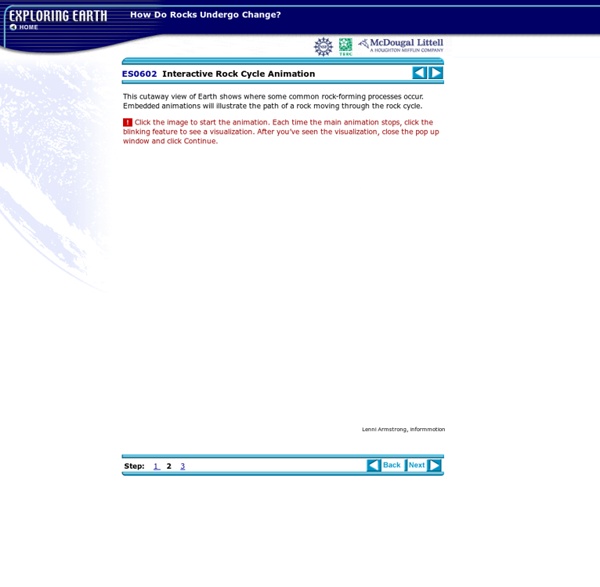



Rock Cycle Hi, my name is Rocky I am your guide on the journey around the rock cycle. The rock cycle is a continuous process that occurs over millions of years. It makes new rock, destroys old rock, and recycles the ingredients of the Earth's crust over and over again! If you want to join me on an amazing journey under the Earth click on the cycle below. You can start wherever you want, but it is probably best to begin at Weathering and work your way around it from there. Have you mastered the rock cycle yet? The Life Cycle of a Mineral Deposit—A Teacher’s Guide for Hands-On Mineral Education Activities This teacher's guide defines what a mineral deposit is and how a mineral deposit is identified and measured, how the mineral resources are extracted, and how the mining site is reclaimed; how minerals and mineral resources are processed; and how we use mineral resources in our every day lives. Included are 10 activitybased learning exercises that educate students on basic geologic concepts; the processes of finding, identifying, and extracting the resources from a mineral deposit; and the uses of minerals. The guide is intended for K through 12 Earth science teachers and students and is designed to meet the National Science Content Standards as defined by the National Research Council (1996). To assist in the understanding of some of the geology and mineral terms, see the Glossary (appendix 1) and Minerals and Their Uses (appendix 2).
MTI Minas País Vasco Rock Key The Rock Identification Key - by Don PeckRock Key Table of Contents What Are Rocks? Rocks are what the crust of the earth is made of. They are the mountains and the bottom of the ocean. They are everywhere on earth, but often buried under soil. Rocks are made of minerals, like quartz, calcite, feldspars, and micas. [ Return to Rock Key Table of Contents ] What Minerals Form Rocks? Infographic: Potential vs. Kinetic Energy - KIDS DISCOVER Scientists define energy as the ability to get work done. The work can be anything from breathing to riding a bike to taking a nap. This free lesson sheet explains the two states for which all energy exists: potential and kinetic. Energy for iPad Packed with rich video and interactive animations, this app brings the topic of Energy to life, as kids discover the various sources and forms of energy we encounter on Earth, and how we as humans can better conserve our use of it. Video PreviewGet the app A Lesson in Potential and Kinetic Energy